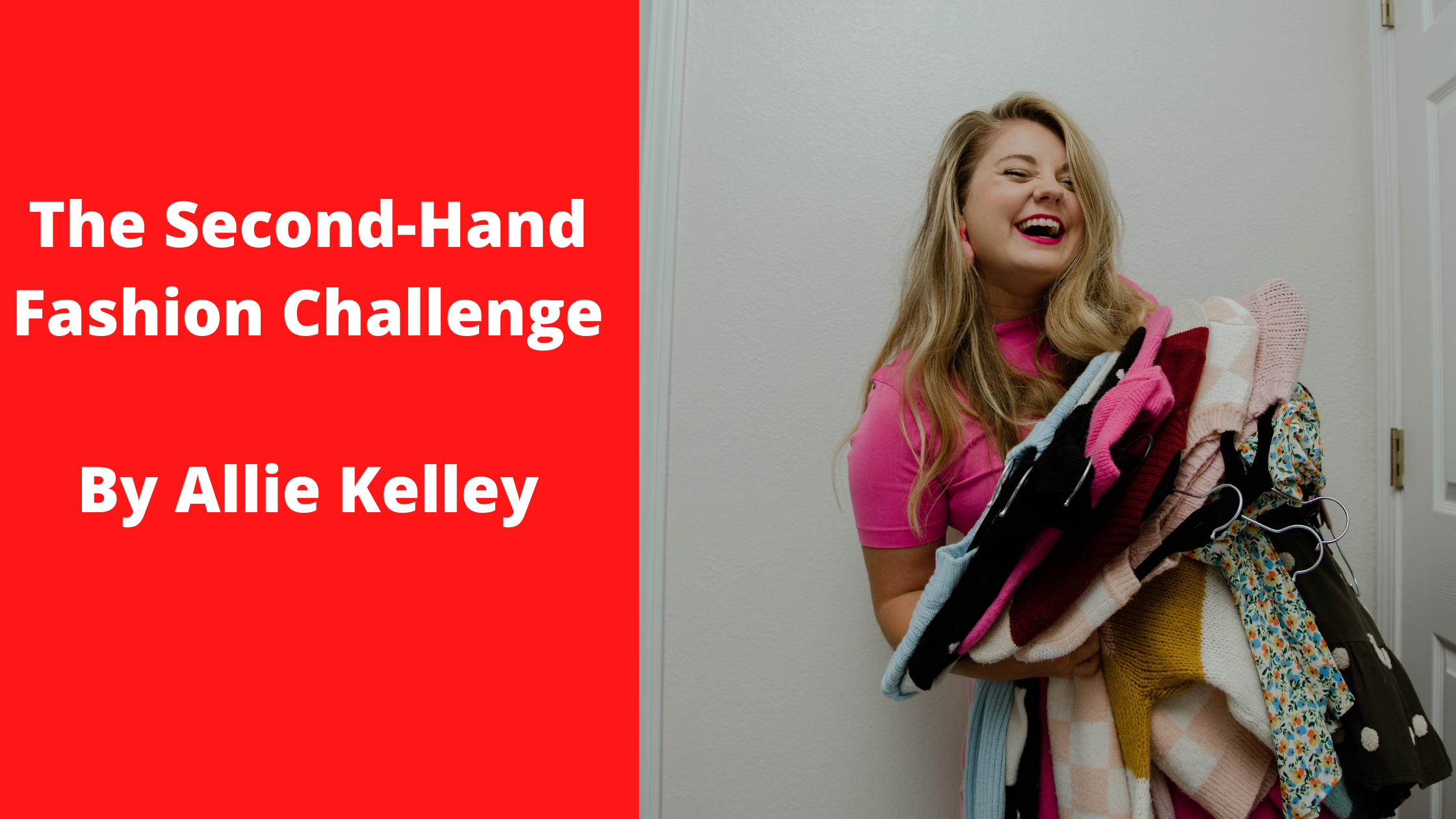The Second-Hand Fashion Challenge

GUEST BLOG
BY ALLIE KELLEY
@heyallie.xo
Hey! I’m Allie! I’m a thrift style blogger based in Madison, Wisconsin. I love the thrill of thrift and I also love knowing that it’s doing a little bit of good for the world, too.
In 2019, I made it my mission to ONLY shop secondhand for the entire year (with a couple of exceptions). Mainly, I did not want to spend my money on fast fashion and purchase pieces that are designed to fall apart and go out of style…not to mention the horrific working conditions and terrible carbon emissions. But I digress. This, my friends, is the vicious fast fashion cycle.
An example of the cycle: You’re aimlessly scrolling along on Instagram when suddenly you see this dress. You’ve never seen anything more beautiful and you have to have it. It’s a dress that everyone suddenly seems to be wearing as you’re scrolling through your feed. You rush to see where it’s from and order it immediately. Then, in a few days/weeks you’re no longer seeing that dress all over Instagram. It sits in your closet indefinitely until it finally makes its way out only to be rotated for a different, but equally beautiful dress that you had to have. I know this because it’s based on a true story about myself and an incredible pink dress from the Christopher John Rogers x Target collab. This is this vicious fast fashion cycle.
But there’s something really powerful we can do about it and that’s to do a little research. Because we’re friends, I’ll make it really easy with some big hitters that changed my mind about the fashion industry and made me decide to really put my money where my mouth is:
- The fashion industry is the second largest contributor of carbon emissions second only to the petroleum and gas industry. (AKA, the fashion industry is one of the main contributors to global warming.)
- It takes 1,800 gallons of water to produce ONE pair of denim jeans. That water also contributes to water pollution.
- 25 billion gallons of water is needed for one year’s worth of global textile production.
- The EPA estimates that 5% of all landfill space is textiles.
- On average, Americans throw away 81 pounds of textiles every year.
The moral of this story is that the most sustainable clothing is what you already have in your closet. Don’t be afraid to get creative with what you have. Crop it, dye it, paint it, learn to mend your clothes so you can keep them longer.
The second best thing is thrifting, renting, swapping, or borrowing because it also lengthens the lifespan of a garment. The longer you extend the life of a garment and keep it out of landfills, the better. This is why thrifting is great for the environment. It extends the lifespan of clothing and allows textiles to be recycled.
Arc Thrift Stores is one of the largest recyclers in the state of Colorado. Every year 21 MILLION pounds of goods are diverted from Colorado’s landfills thanks to arc Thrift Stores and the eco-savvy customers who donate and shop at the stores located throughout the state. Of that number, 13 MILLION pounds is cloth that goes on to be repurposed. When you donate to arc, you can know it’s being kept out of landfills and doing good.
Also, most of the clothing, shoes, books, toys, handbags, belts, baseball caps, and other items that don’t sell in the stores are bundled up and sent to other countries throughout the world where they are put to use by those in need.
My challenge to you? See if you can buy only secondhand clothing for a whole month, then two months, and so on. Challenge yourself to see how long you can go without buying fast fashion! THEN tell me all about it on Instagram @heyallie.xo I want to hear about your fabulous thrift journey.
Resources:
Greenamerica.org



